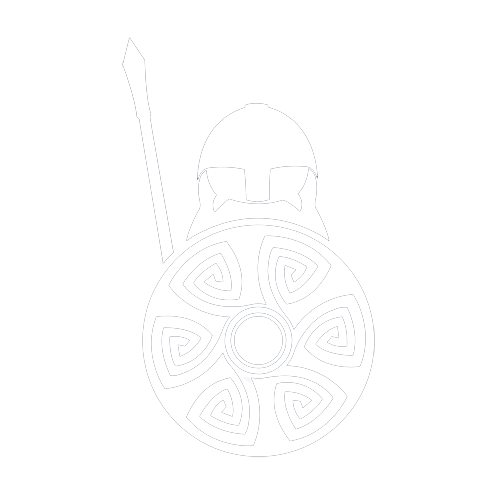Rochester Castle
Rochester Castle is a Norman fortress with centuries of stories to be told, most famous of all being the great siege by King John in 1215. Rochester castle has one of the tallest keeps in all of England, and being located strategically on a bend of the river Medway in Kent, there is no wonder the king wanted it back.
The Construction of Rochester Castle
The Normans initially built Rochester castle with wood, straight after the Battle of Hastings, but in 1087 they rebuilt it in stone. The castle was one of the first stone castles in England, and the reason why it was upgraded was because of it's position, sitting on the site of an important river crossing. A Roman road, Watling Street, leads up from the south coast and crosses the river Medway, and then on to London. The fortress guards both the road and the river. Today, Rochester Castle is managed by English Heritage.
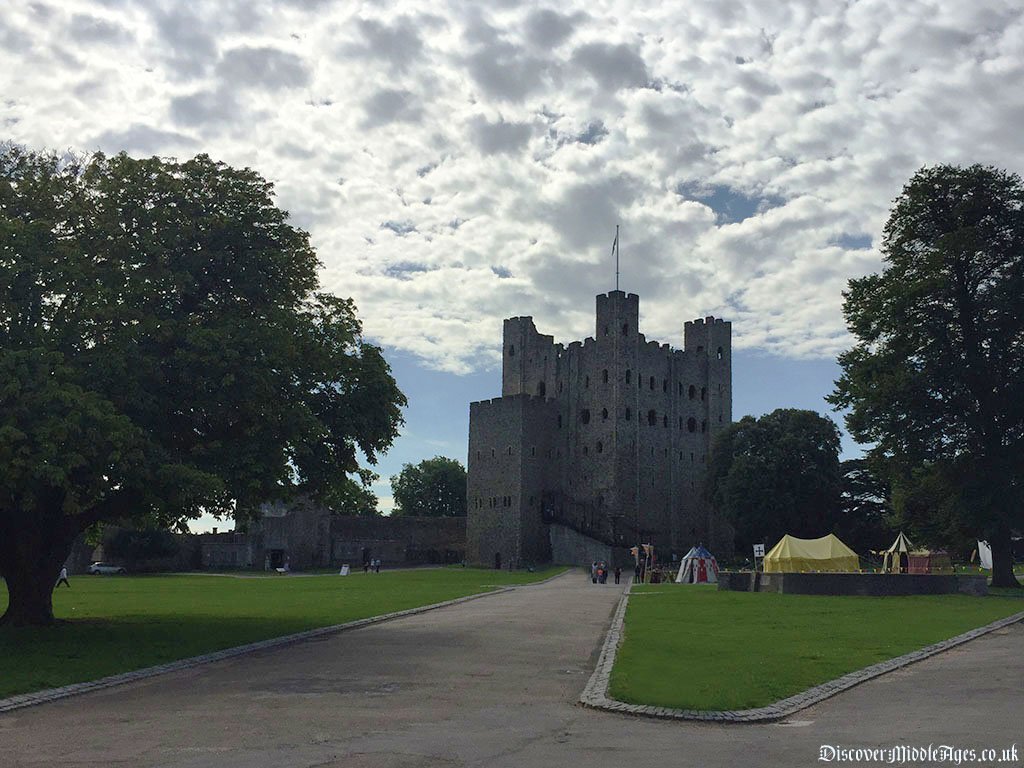

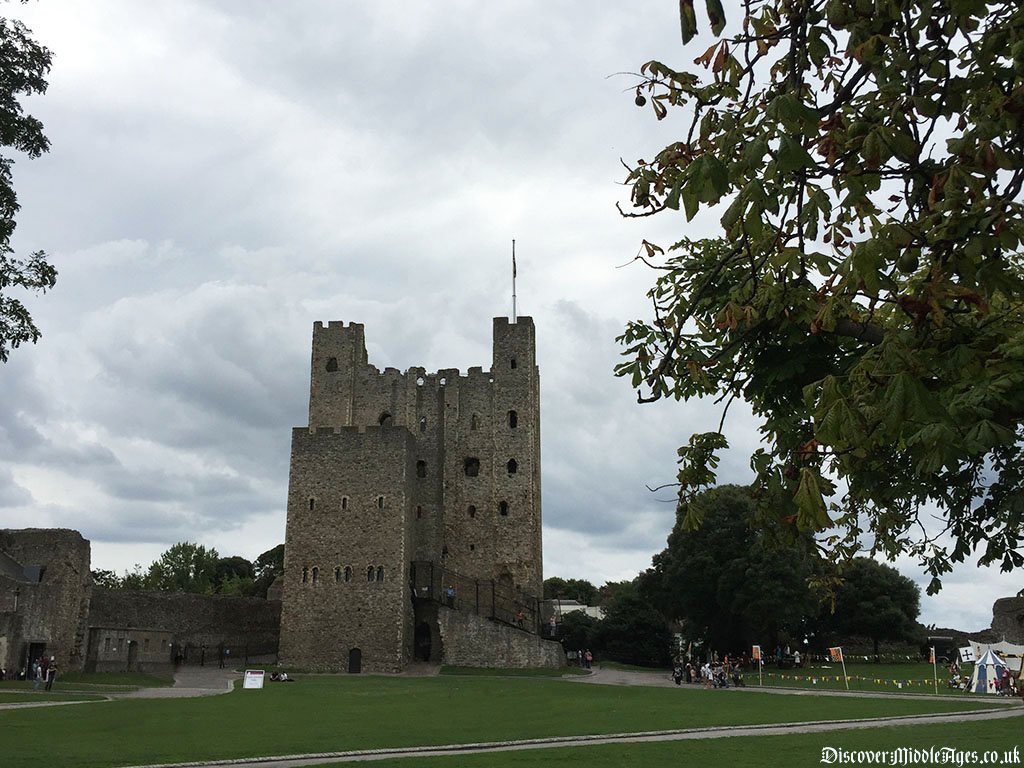

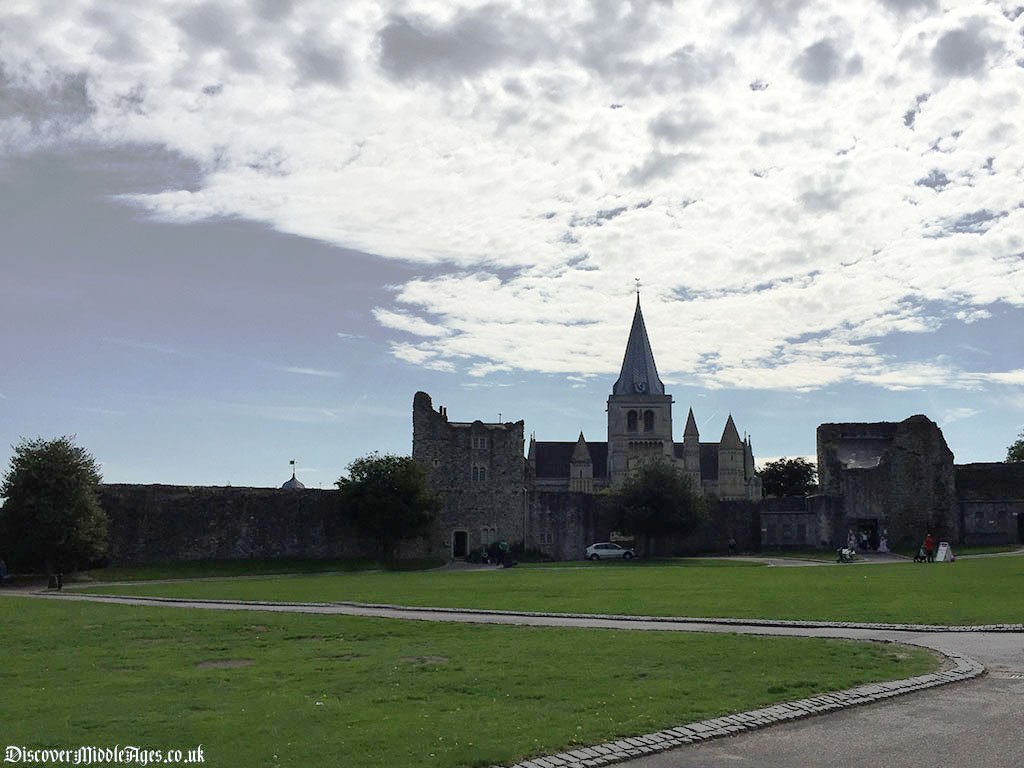
Rochester Castle History
Rochester castle sits inside an ancient Roman stone enclosure. The Romans started a settlement called Durobrivae, which means Fort by the bridges, in the area of Rochester and the river Medway. Part of the Roman wall that surrounded Durobrivae was used during Medieval times as a defensive wall for Rochester castle, and still exists today.
William I (the Conqueror) built Rochester castle shortly after 1066, to guard the crossing point of the river Medway. The Bishop of Rochester owned the land at the time, and the Normans raised the ground up away from the river to build the first stone castle there.
Upon his death, William I handed Normandy to his elder son Robert and England to his younger son William II (Rufus). William I's half-brother Bishop Odo was already Earl of Kent at the time, and allied with Robert, and Rochester castle was one of his residences. During the rebellion of 1088 over the succession of the English throne, Odo seized Rochester castle and blockaded the city to form the base for the rebellion. Only to surrender shortly after when his garrison collapsed.
It was after this first siege that William II decided to strengthen Rochester castle's defences in 1088. Gundulf, the bishop of Rochester, was commissioned to rebuild the castle while working on Rochester cathedral at the time. His experience was quite suitable for the job, as he was previously commissioned to build the Tower of London in the 1070s.
Rochester castle continued to improve over the next few decades. Henry I, who succeeded his brother William II, granted the castle to the Archbishop of Canterbury (William de Corbeil) on condition that further fortifications would be built. As a result, the tallest of all stone keeps in Europe was erected. Crucially, due to the incredible design of the keep, a huge spine wall was built in the centre of the keep, splitting it structurally in two. This would have significant consequences during the first major test of Rochester castle's defences, the famous First Baron's War (1215-1217).
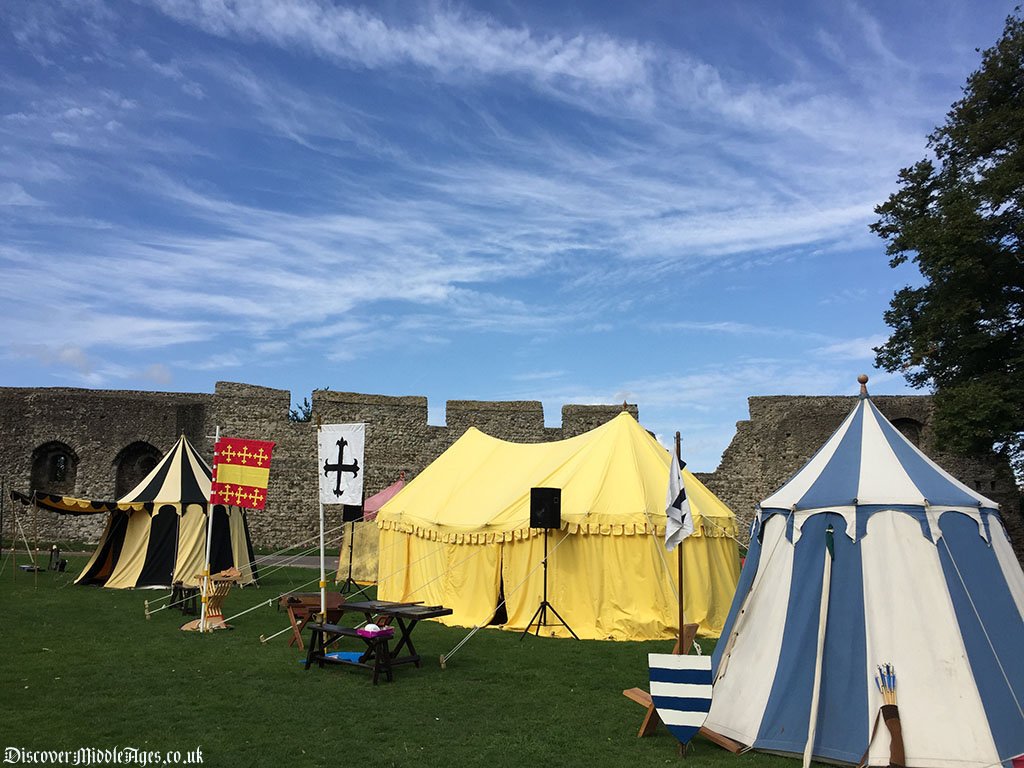

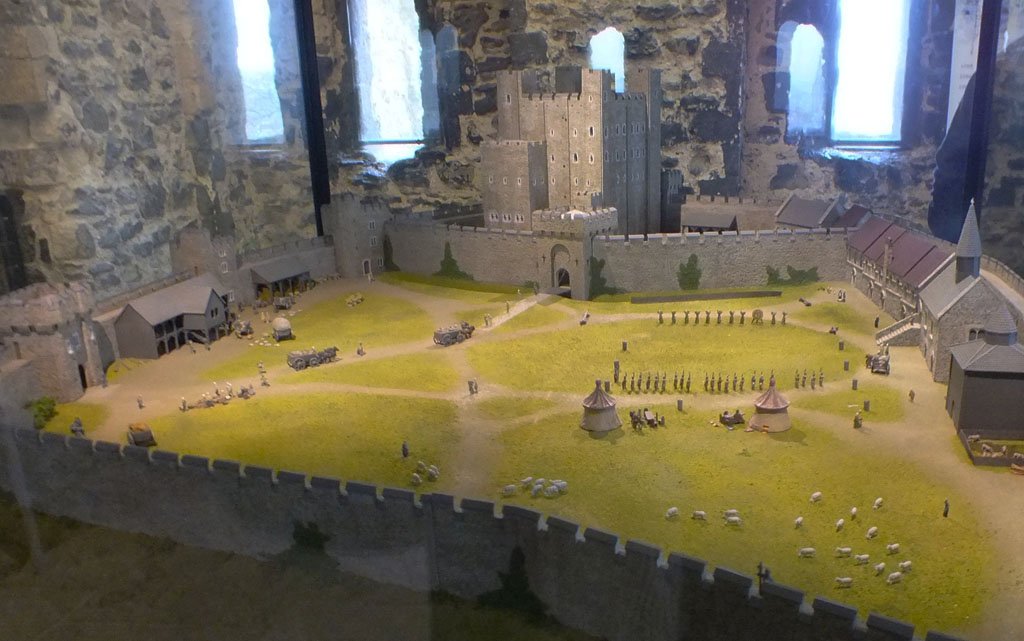

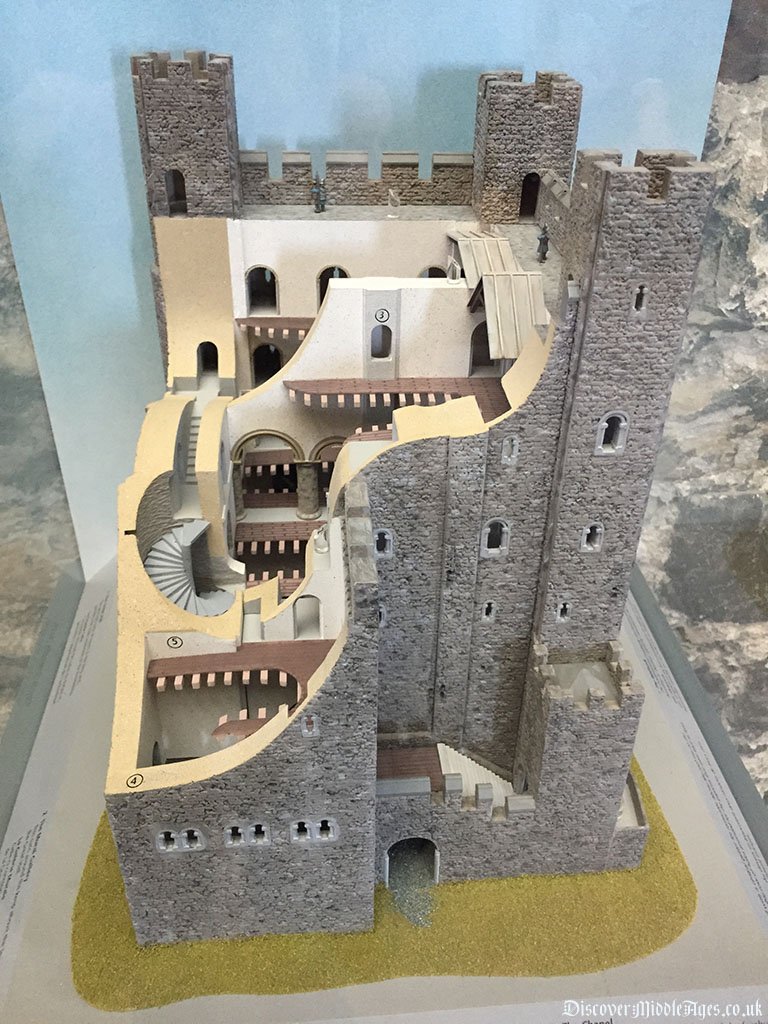
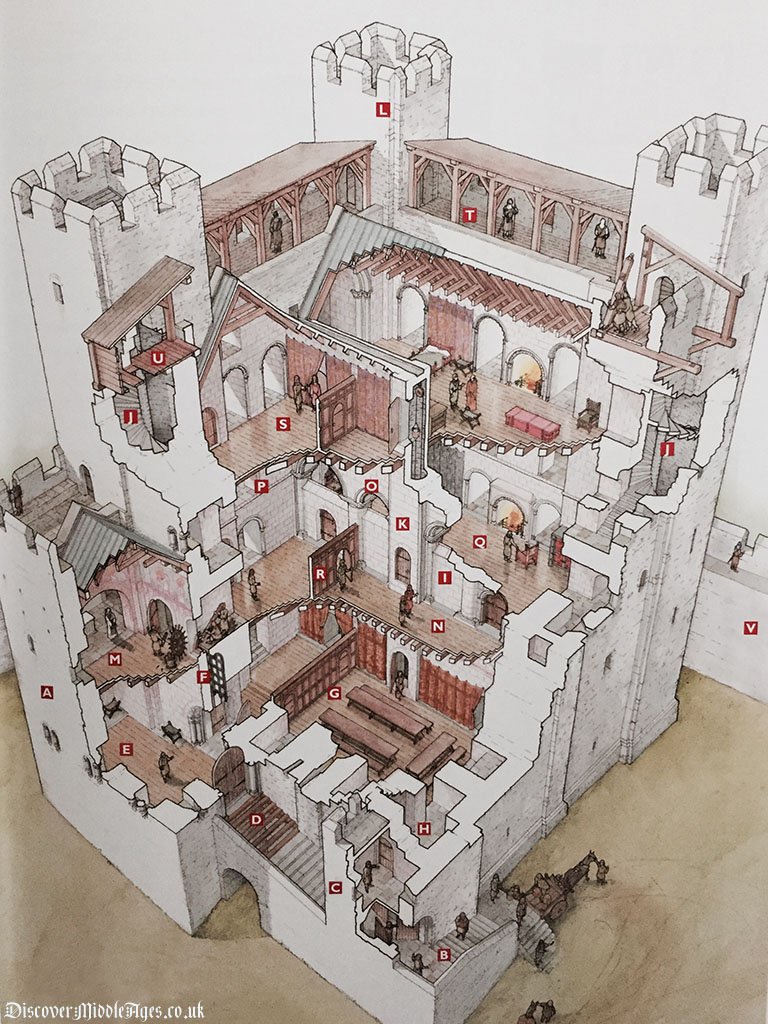
First Baron's War and the Siege of Rochester Castle
During the turbulent reign of the despised King John (1199-1216), the Archbishop of Canterbury (Stephen Langton) was persistently blocked by John from becoming elected, until the pope intervened. King John had no choice but to accept the Archbishop, and agreed Rochester castle would be in the Archbishop's hands on condition that no ill become of it. Langton made no such agreement.
Shortly after the Barons forced King John to sign the Magna Carta in 1215, this arrangement collapsed. The Baron, William d'Aubigny, and his troops marched to Rochester castle and the constable Reginald de Cornhill opened the gates, and let the rebels in. King John, on his way up to London from Dover, stopped at Rochester and was met by an attack from the leader of the rebel Barons, Robert Fitzwalter, a signee of the Magna Carta. King John's army forced Fitzwalter back to London, and cut off any further attacks by destroying the bridge across the Medway with fire ships. Then the siege began on Rochester castle.
The outer walls were breached by royal siege engines, but the keep remained strong. King John's siege engineers began undermining the south-east corner of the keep, holding up the mine with large timber struts. It was then that King John called for forty of the fattest pigs to burn the mine with such heat, as to bring down the tower of the keep.
“Send to us with all speed by day and night, forty of the fattest pigs of the sort least good for eating so that we may bring fire beneath the castle”
When the south-east corner of the tower collapsed under the intense fury of the flames, the rebels inside were able to continue defending from the other side of the central spine wall, such was the structural strength of the castle. However, after resisting for just over seven weeks, the garrison surrendered. It was hunger that eventually forced their hand. King John was dissuaded from hanging every rebel baron by one of his captains, reminding him of the repercussions if he did so. The Barnwell chronicler remarked:
“Never in our age has a siege been driven so hard, or resisted so bravely”
Rochester castle did not stay under King John's control for long. In 1216, Rochester was taken by Prince Louis of France, but when king John died, his son Henry III took control back in 1217.
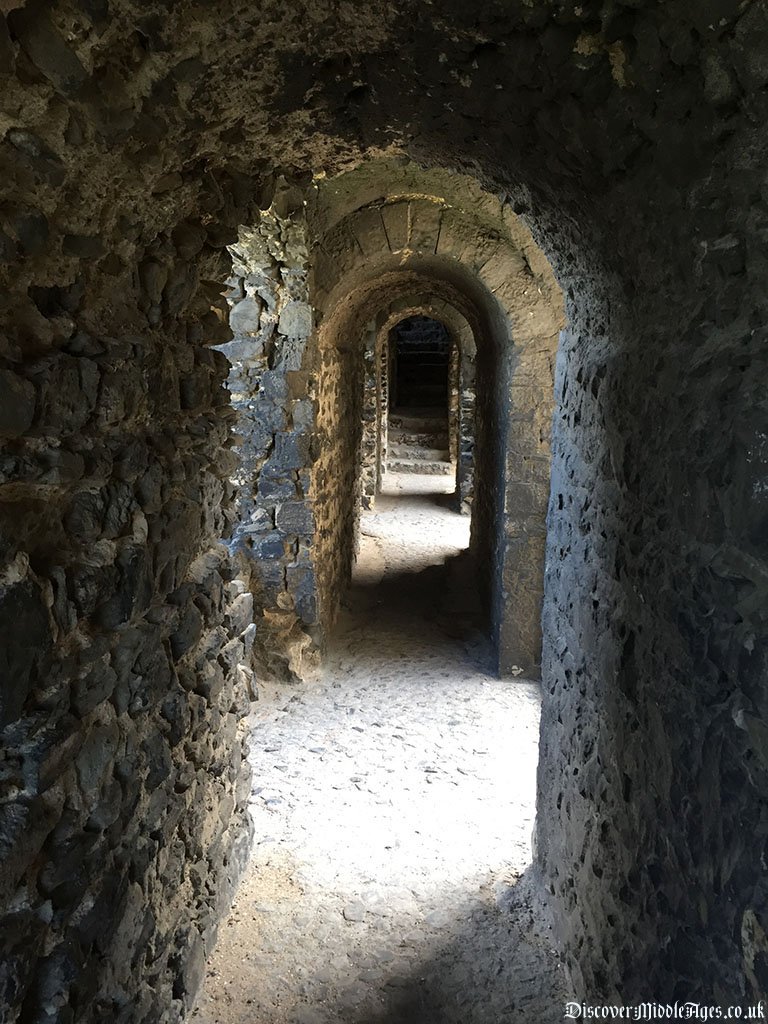
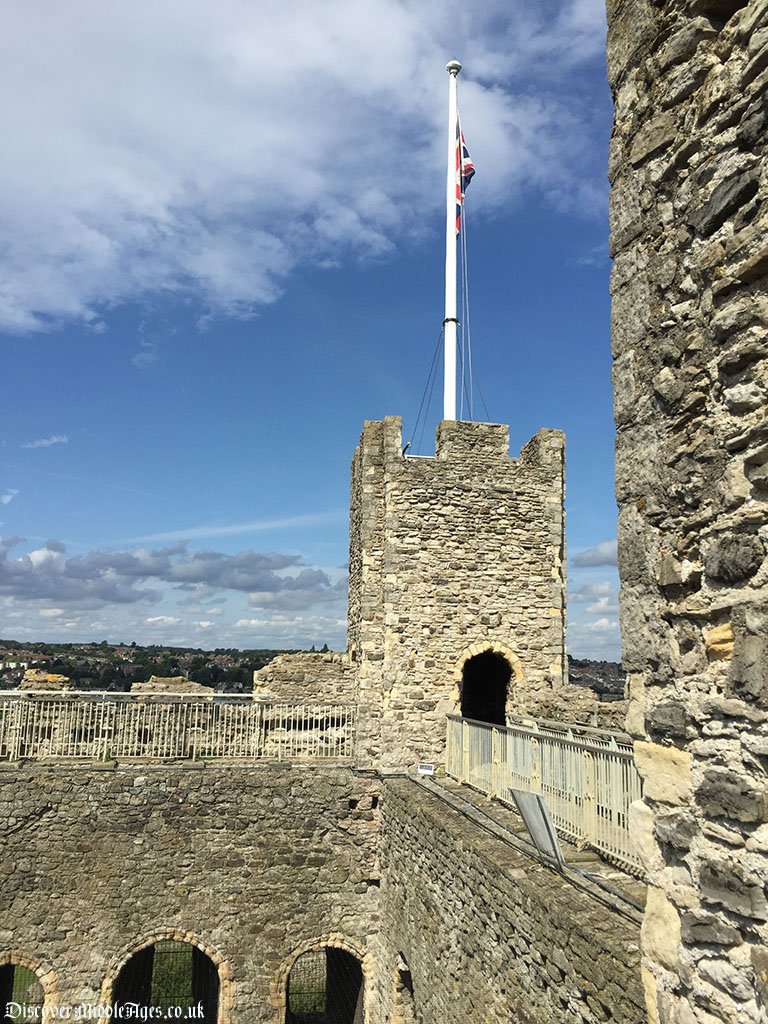
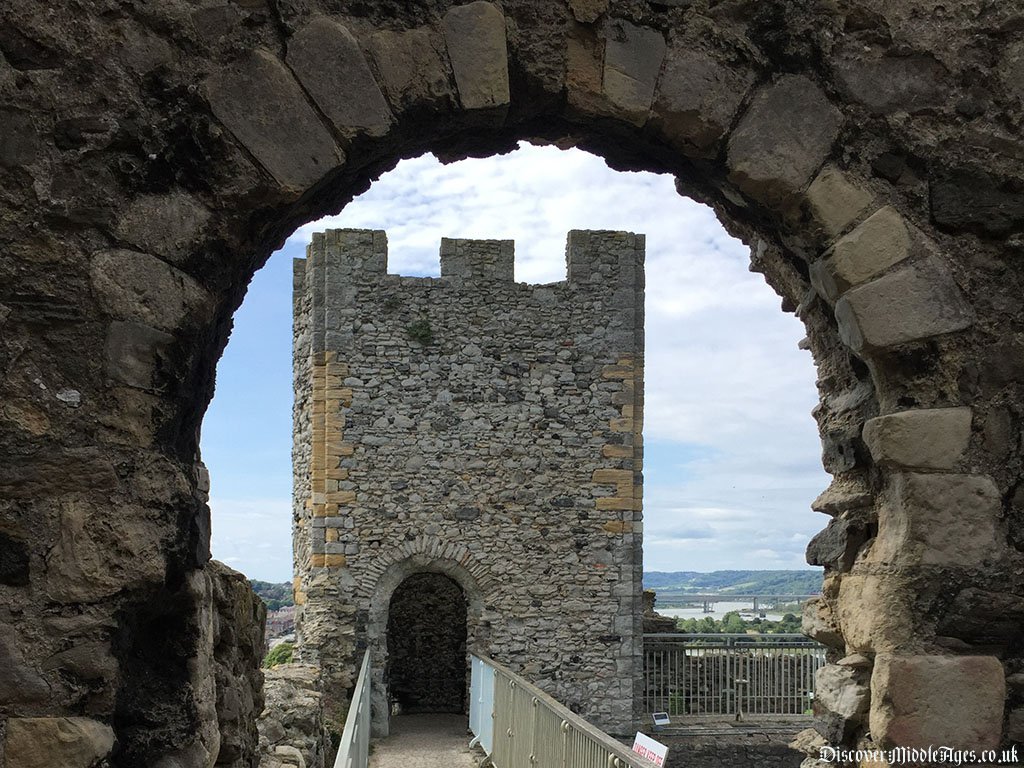
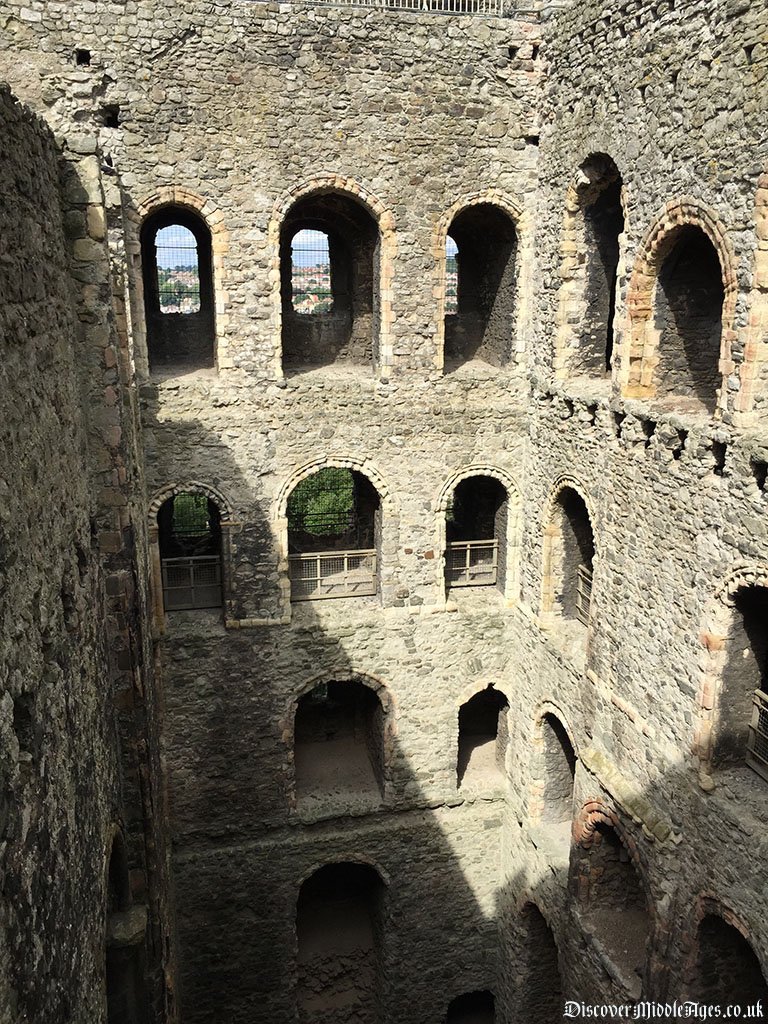
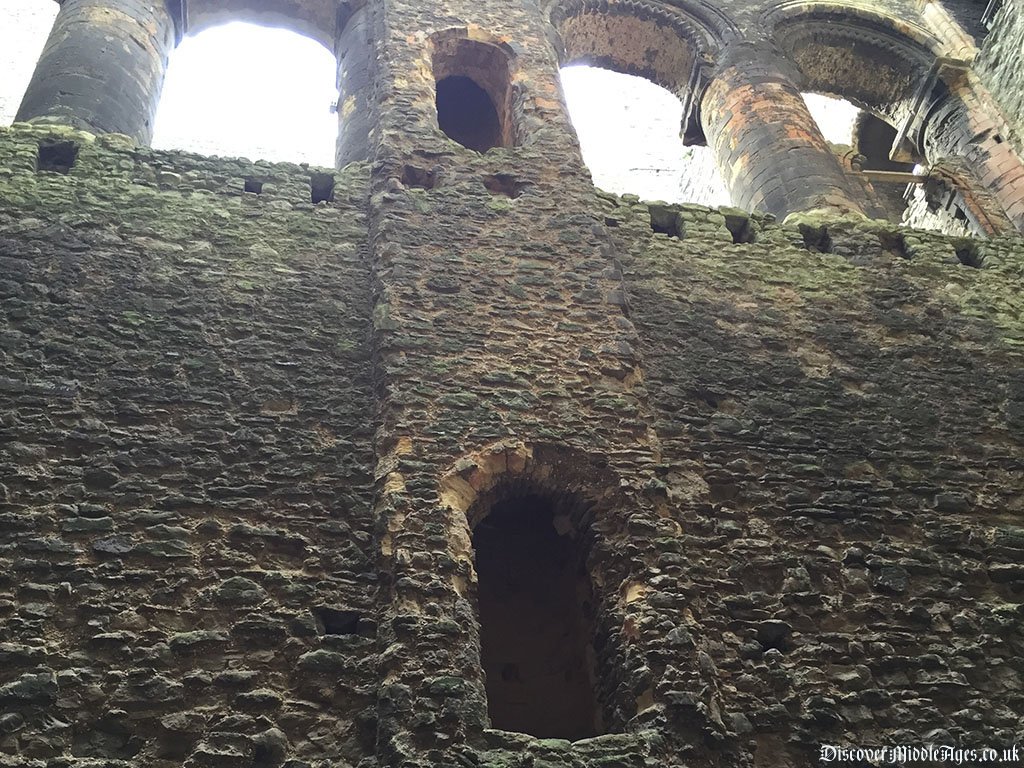
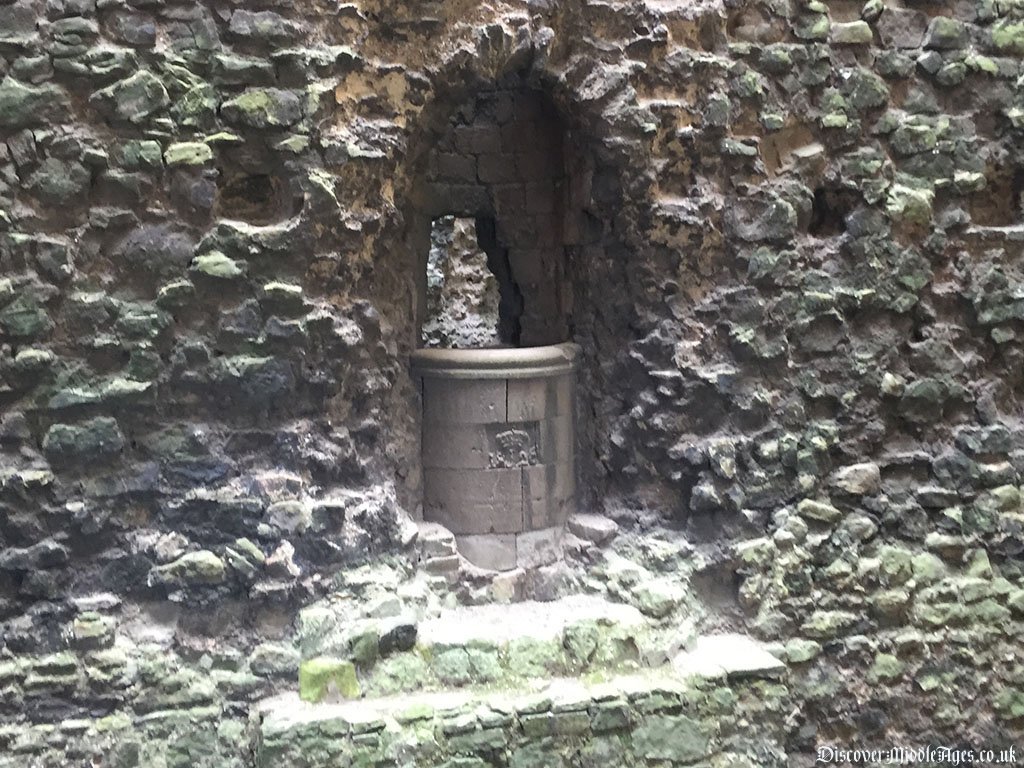
Second Baron's War and the Siege of Rochester Castle
Rochester castle was again besieged in 1264, for the third time, during the Second Barons' War (1264–1267). Baron rebel armies led by Simon de Montfort and Gilbert de Clare, were once again challenging the king's authority (Henry III). The rebels entered Rochester and attempted to capture the castle. Rochester's defenses were once again strong, and despite de Montfort breaking into the bailey, the defenders were protected well inside the keep. The siege continued for a further week, until de Montfort heard reports that Londoners were about to defect to the king. The siege was swiftly lifted.
Rochester castle had suffered extensive damage, and as Henry III was struggling to remain in power, with ongoing wars with the Barons, Rochester castle was left to decay. It was the main keep and some outer walls that survived throughout the rest of the middle ages.
Rochester Castle and the Peasant's Revolt
Rochester castle saw its final attack, in 1381 when it was captured and ransacked during the Peasants' Revolt during the reign of Richard II. Robert Baker of Dartford stormed the castle, and the constable in charge released (without a fight) Robert Belling, an escaped serf from the estate of Sir Simon de Burley, who was held prisoner there. Together, the two Roberts and the rest of their party of revolutionaries, marched onto London. The revolt was soon quashed the following month.
The Keep of Rochester Castle
The Keep of Rochester castle was the tallest in Europe at one time. Chroniclers in the 12th century described it as noble and outstanding, and indeed it was (and still is). Its creation began in 1127, by William de Corbeil, the Archibishop of Canterbury, and sits 125ft high. The entrance consists of a stone stairway leading up the first floor, with a set of removable wooden steps positioned before the entrance door, which could be removed in times of trouble. A series of gatehouses and portcullis' add to the security. The windows on the first floor are very narrow, and get larger as you go up the keep, offering maximum security whilst allowing some light in.
Inside the keep, there are three floors above the basement and a further battlement at the top, offering incredible views over the river Medway and surrounding land. There are luxuries like latrines present throughout, which send waste down to the cesspit at the base of the keep, and a well-designed fresh water well shaft built into the spine wall. This well is 20m deep, and can provide fresh water right up to the top levels of the keep. It still holds water today.
The central spine wall, which splits the keep into two, was the structural factor that prevented the whole keep from collapsing when King John's miners brought down the south-east tower, during the great siege on Rochester castle. The south-east tower itself was rebuilt after its collapse, and you can tell which one it is, because they rebuilt it with a semi-circular design, rather than the classic square shape the other three have. It also uses local stone from Reigate, rather than the more costly Caen stone from Normandy.
On the second floor, is the grandest room in the keep. The height and size of the room, along with the detailing on the arches, windows and fireplaces, gives it the grandeur of a state room. A gallery built into the outside wall, surrounds the upper part of stately room. Arches in the gallery offer light through from the outer windows, and opportunities to look down on the activities occurring in the the main room.
At the very top of the keep are the battlements. Classic crenellations running between each tower, offering maximum support for archers. Along the battlement floor, holes still exist where timber supports reached out beyond the outer wall, which held wooden platforms (hourds). These hourds would allow rocks or oil to be dropped through trapdoors in the floor, directly down onto enemies climbing the wall, or at the base of the wall.
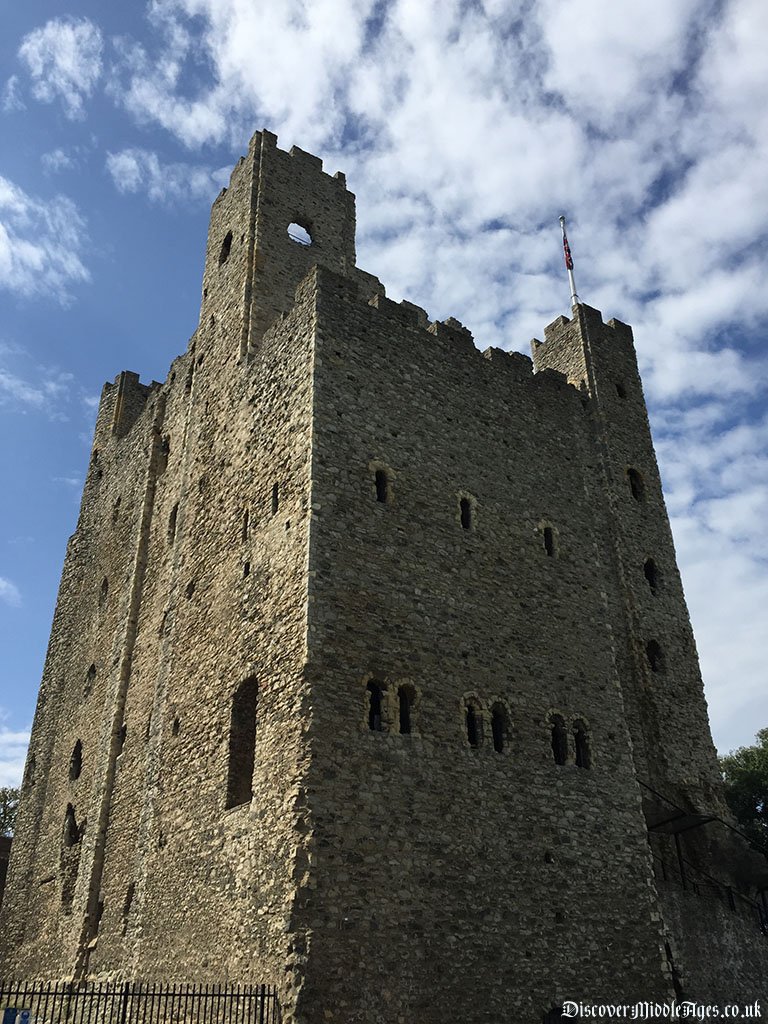
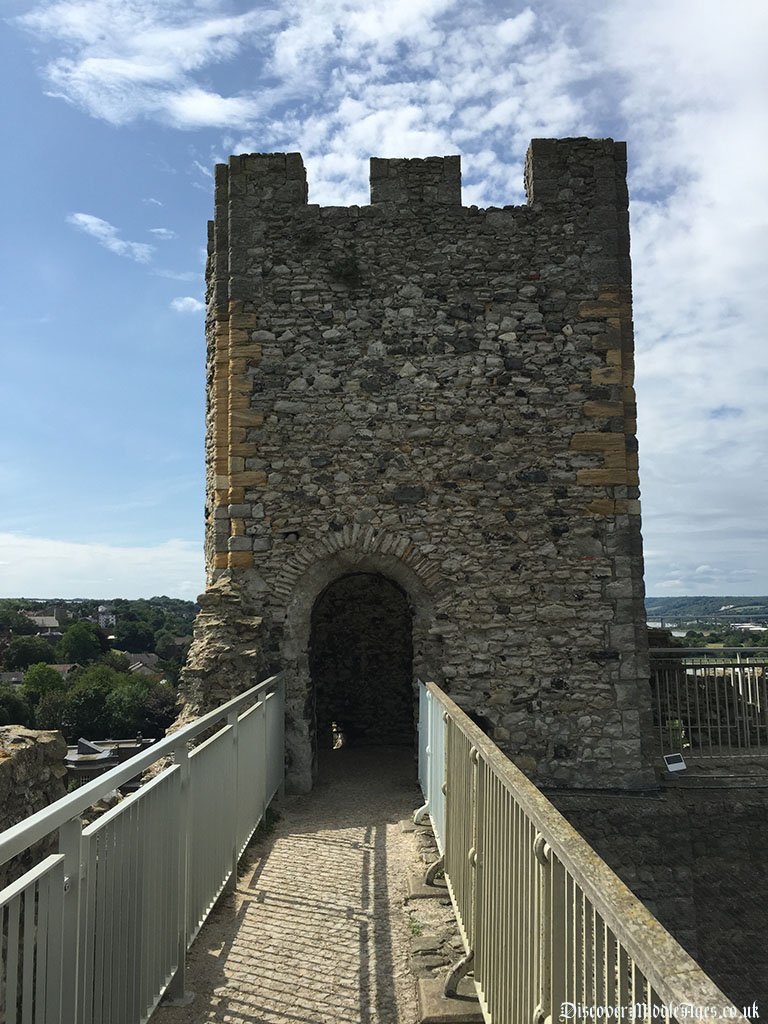
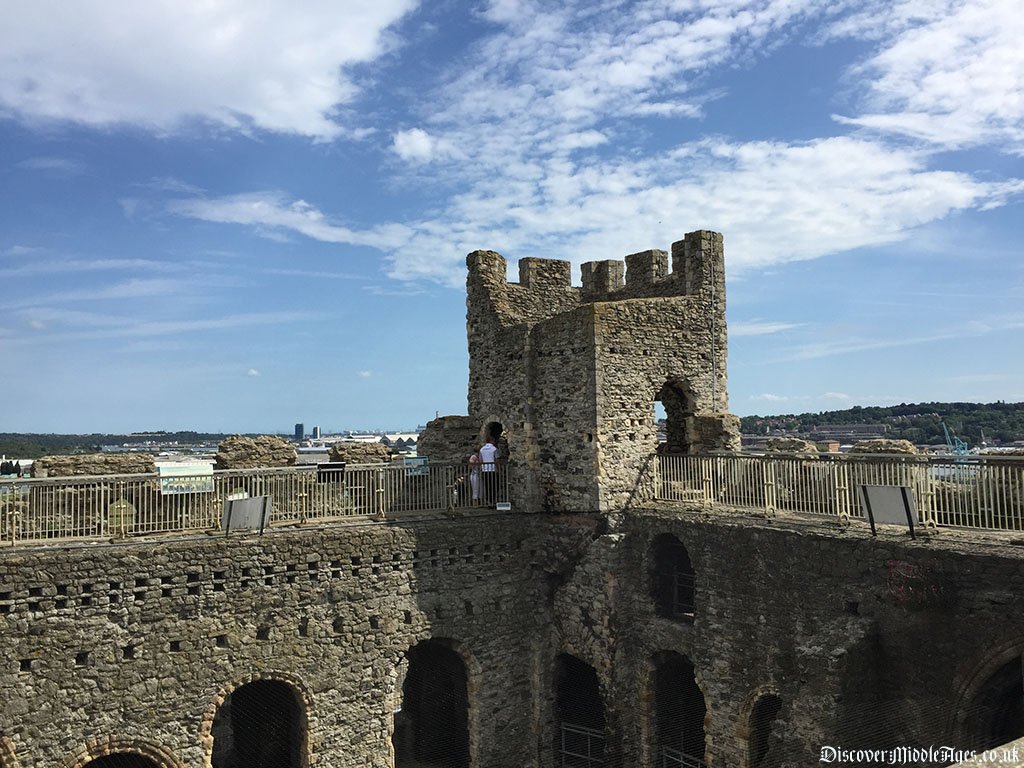
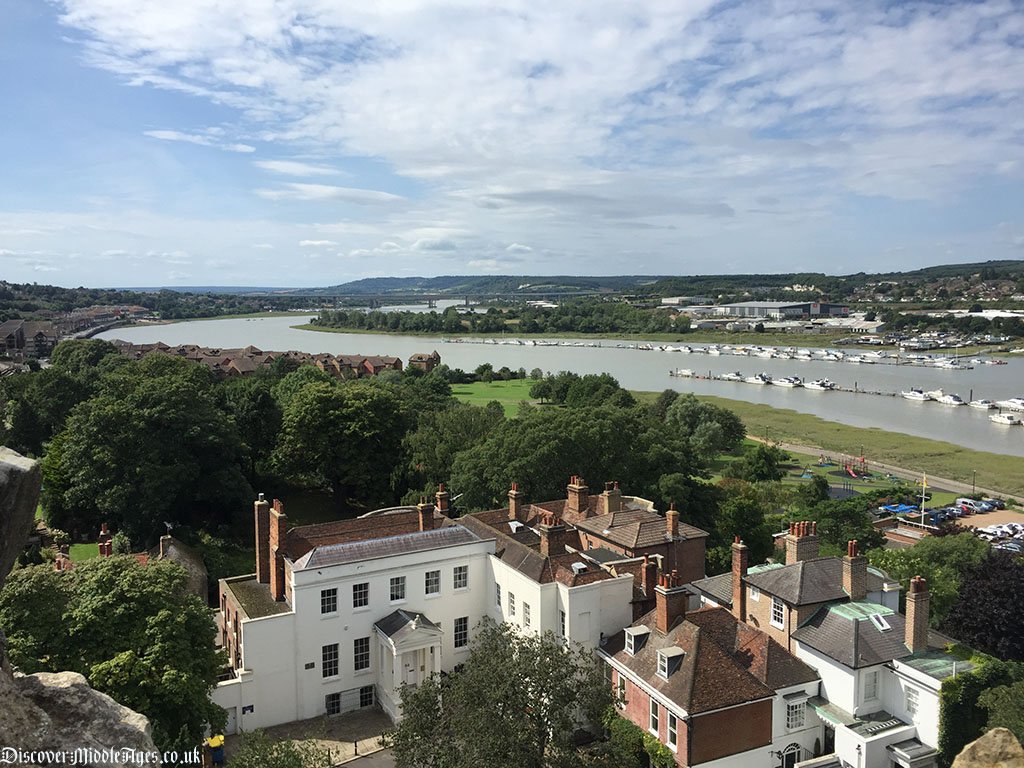
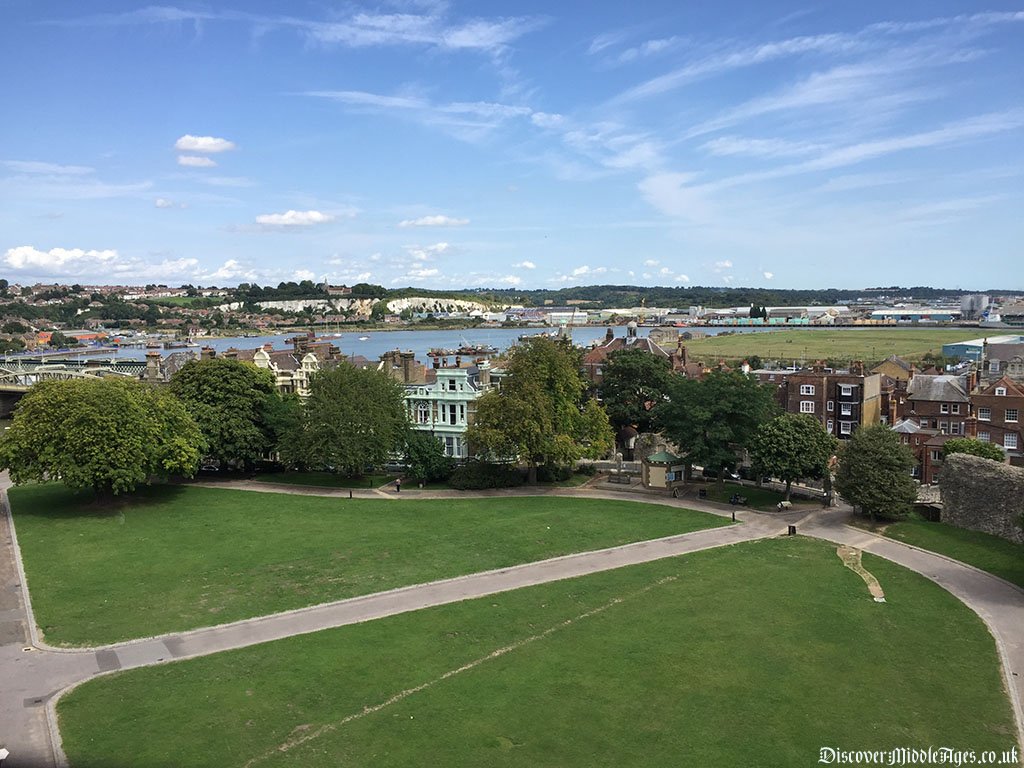
Rochester Castle Facts
Rochester castle is in Rochester, Kent and sits between the river Medway and the Roman road, Watling Street
Rochester castle sits on top of the pre-conquest Anglo-Saxon settlement of Rochester
Rochester castle is a Norman castle and was first made of wood, after the Battle of Hastings by William the Conqueror
Rochester castle was upgraded to stone in 1087 by Gundulf, the bishop of Rochester. Further improvements were added over the next few centuries
Rochester castle has been left to ruin a number times before being saved
King Henry I gave the Rochester Castle to the Archbishop of Canterbury, William de Corbeil, who built the impressive stone keep in 1127
Rochester castle was sieged for the first time by Bishop Odo, Earl of Kent
Rochester castle was sieged for the second time by King John in the First Baron's War
Rochester castle was sieged for the third time by rebels during the Second Baron's War
Rochester castle was involved in the Peasant's Revolt of 1381, where it held prisoner a revolutionary peasant
Charles Dickens wanted to be buried outside Rochester castle, in a small cemetery there
Rochester Cathedral
Rochester Cathedral in the Diocese of Rochester in the Church of England, and the seat of the Bishop of Rochester. This is the second oldest bishopric in England, behind the Archbishop of Canterbury. A cathedral is been here since Roman times, and was founded in 604AD by Bishop Justus. The cathedral you see today was built by Gundulf, the Bishop of Rochester in 1080, around the same time Rochester castle was built in stone. Rochester cathedral houses one of the oldest doors in England, albeit hidden from view.
Following the murder of William of Perth, a Scottish baker in the 13th century, the Cathedral became a place of pilgrimage. From his shrine in the cathedral, of which no trace remains, miracles were apparently reported of. Today, pilgrims who journey to the Cathedral can still climb the very worn steps up to the shrine, and light a candle at the William of Perth prayer-station.
Visiting Rochester Castle
Rochester Castle is run and managed by English Heritage. For details on opening times, facilities and refreshments please visit: https://www.english-heritage.org.uk/visit/places/rochester-castle/
Address: Rochester Castle, Castle Hill, Rochester, Kent, ME1 1SW
